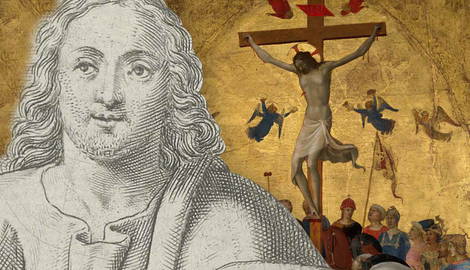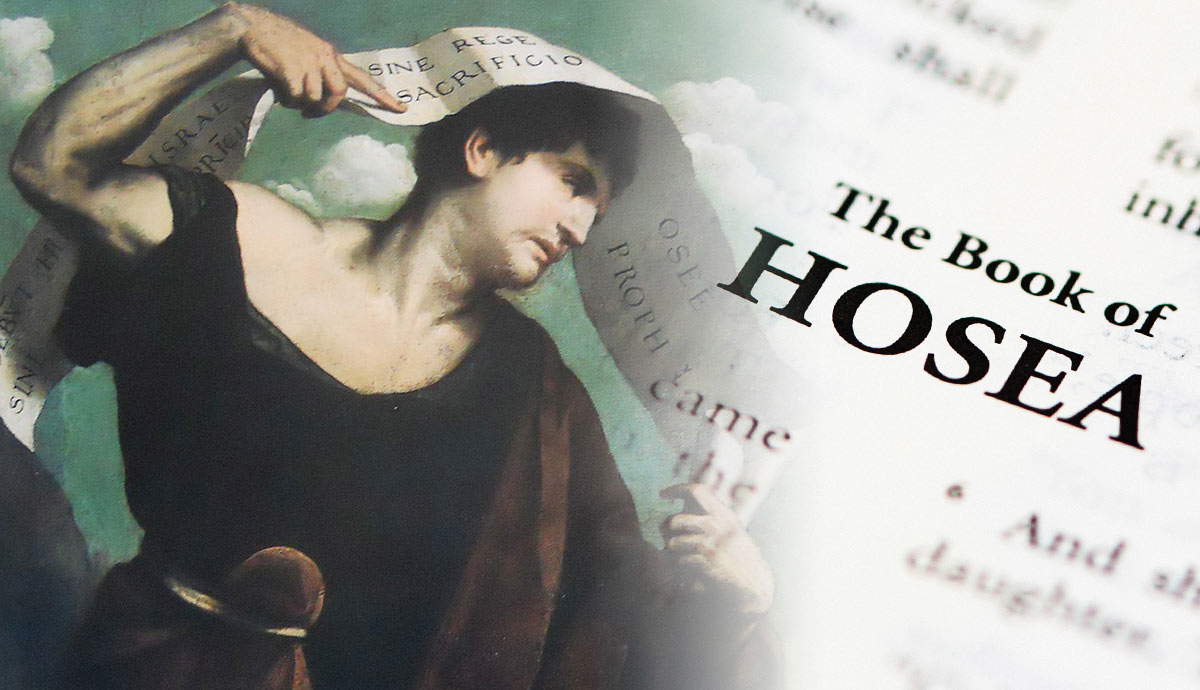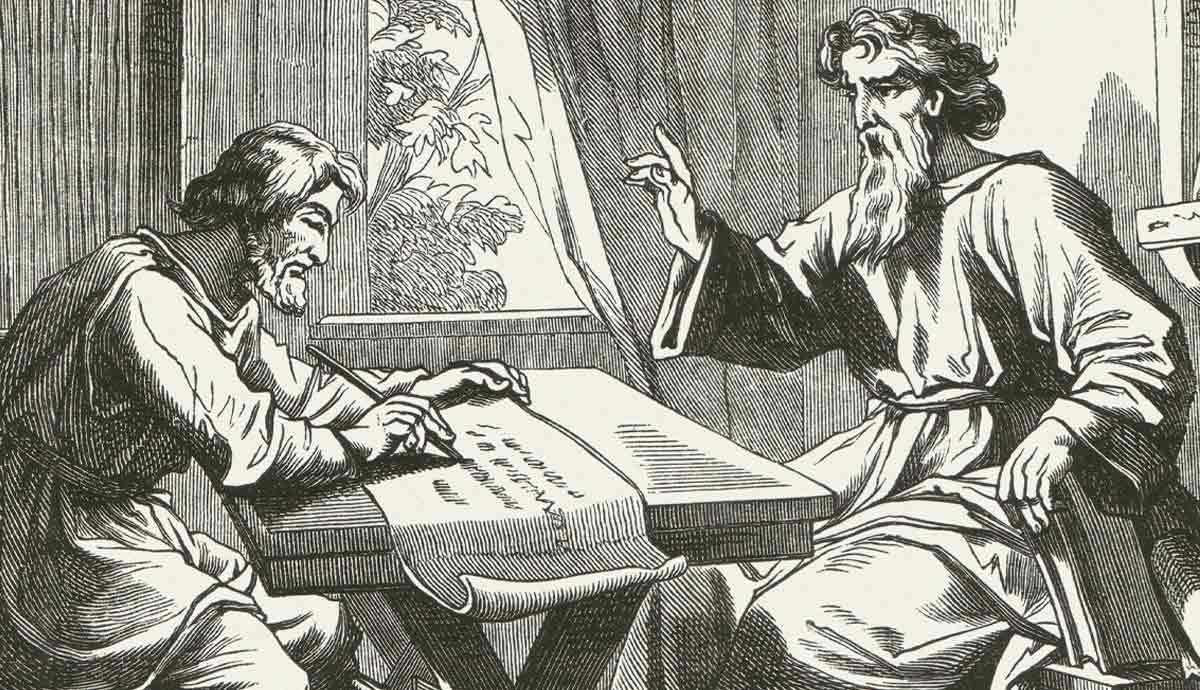
Unlike the synoptic gospels that share many of the events they describe, the Gospel of John presents a unique perspective. Some scholars claim John authored this gospel after the synoptic gospels, which allowed him to address challenges the fledgling Christian religion faced early in its development. John often alludes to Old Testament narratives, such as Genesis 1:1 and the “I AM” statement to Moses in Exodus 3:14. John also lays the foundation for his epistles when he engages with themes like obedience to the commandments, love, and the Holy Spirit which he later expands on.
Authorship and Date of the Gospel of John

The Gospel of John, like the synoptic gospels, does not identify the author. In the last chapter of this gospel, the author states: “This is the disciple who is bearing witness about these things, and who has written these things, and we know that his testimony is true” (John 21:24). By implication, “the disciple whom Jesus loved” (John 21:20) was the author.
From very early on, church tradition held that John “the beloved apostle” wrote the Gospel of John. Irenaeus and Clement of Alexandria, two prominent Church Fathers from the latter part of the 2nd and early 3rd century, attributed the gospel to John.
Contemporary scholars, however, doubt such an attribution due to the level of Greek used and the theological complexity this gospel displays. They subscribe to the idea that another individual or a community of followers of John compiled the gospel from the testimony of John about what he had witnessed.
The Gospel of John traditionally dates to some time after 85 CE. Scholars justify the late date by arguing that the complexity of the theology supports it. Complexity in theology, however, does not necessarily indicate a late date. Romans, dated comparatively early compared to other New Testament books, is complex.
More recent scholarship has claimed much earlier dates of between 50 and 70 CE. They argue that the present tense in John 5:2 shows that the author wrote this gospel before 70 CE when the Romans destroyed Jerusalem.
Historical Context

The amount of detail John goes into on Christology suggests that there may have been doubt about the identity of Jesus when John authored his gospel. John focuses on the nature of Christ and highlights it in several ways. Instead of a nativity scene, John introduces his gospel by connecting Jesus to the Creator from Genesis 1:1. His emphasis is on Jesus, the God-man.
The number of references and allusions to Old Testament events and symbols show that John wrote for a Jewish audience. Initially, Christians would worship alongside Jews in synagogues, but their identification of Jesus as the Messiah caused conflict between the two groups, and in the late 1st century, Christians were no longer welcome in synagogues.
Structure

Prologue: The Word Became Flesh (John 1:1-18)
The beginning of Jesus’s ministry (John 1:19-51)
John started his historical narrative of the ministry of Jesus by first highlighting the ministry of John the Baptist and how he identified Jesus as the Lamb of God. He recorded details on the calling of the disciples.
The ministry of Jesus (John 2-11)
In this section of his gospel, John details the ministry of Jesus by highlighting what he said, did, and how he touched people’s lives.
The Passion Week (John 12-19)
John goes into much more detail on the Passion Week than any other Gospel author. He provides long passages of what Jesus said during this time, including a striking prayer by Jesus for his disciples in John 17.
The resurrection and appearances of Jesus (John 20-21)
John details several appearances Jesus made to various people and ends his narrative with the striking interaction between Jesus and Peter, where he, John, becomes part of the conversation as well.
Main Themes

The divinity of Jesus
John starts his gospel with a thesis highlighting the divinity of Jesus. He calls him the Logos, the Word, who was in the beginning and created everything.
Eternal life
The Gospel of John declares that eternal life is available to anyone and everyone who believes in Jesus Christ.
Love and obedience
Obedience as an expression of love is a central theme in the Gospel of John. He returns to this theme in the epistles of 1 and 2 John where he builds on what he has said in his gospel.
The Holy Spirit
John presents the Holy Spirit as our advocate and comforter, who would be sent in the place of Jesus after his ascension.
“I Am” statements
John echoes the self-identification statement of God in the Old Testament (Exodus 3:14) when he records the seven Jesus “I am” utterances. They are “I am the Bread of Life” (John 6:35, 48, 51), “I am the Light of the World” (John 8:12), “I am the Door” (or Gate) (John 10:7, John 10:9), “I am the Good Shepherd” (John 10:11, John 10:14), “I am the Resurrection and the Life” (John 11:25), “I am the Way, the Truth, and the Life” (John 14:6), and “I am the True Vine” (John 15:1; John 15:5).
Key Passages

John 1:1-3 and 14
“In the beginning was the Word, and the Word was with God, and the Word was God. He was in the beginning with God. All things were made through him, and without him was not any thing made that was made.
And the Word became flesh and dwelt among us, and we have seen his glory, glory as of the only Son from the Father, full of grace and truth.”
John echoes the first verse of the Old Testament and in verse 14 claims that the Creator of everything became a man. That is how he was Immanuel, which means God with us.
John 3:16-17
“For God so loved the world, that he gave his only Son, that whoever believes in him should not perish but have eternal life. For God did not send his Son into the world to condemn the world, but in order that the world might be saved through him.”
- John 3:16 is one of the most well-known verses in the Bible. The following verse is just as significant and reflects the loving nature of God in providing a way for man to be saved.

John 13:34-35
“A new commandment I give to you, that you love one another: just as I have loved you, you also are to love one another. By this all people will know that you are my disciples, if you have love for one another.”
John, in his epistles, returns to this theme. He shows that the new commandment is in fact not new but what God commended from the beginning (1 John 2:7-8; 2 John 4-6).
John 20:30-31
“Jesus did many other signs in the presence of the disciples, which are not written in this book; but these are written so that you may believe that Jesus is the Christ, the Son of God, and that by believing you may have life in his name.”
These two verses are John’s declaration on the purpose of his gospel account. He wanted to show who and what Jesus was and the hope there was in him.

John 21:15-18
“When they had finished breakfast, Jesus said to Simon Peter, ‘Simon, son of John, do you love me more than these?’ He said to him, ‘Yes, Lord; you know that I love you.’ He said to him, ‘Feed my lambs.’ He said to him a second time, ‘Simon, son of John, do you love me?’ He said to him, ‘Yes, Lord; you know that I love you.’ He said to him, ‘Tend my sheep.’ He said to him the third time, ‘Simon, son of John, do you love me?’ Peter was grieved because he said to him the third time, ‘Do you love me?’ and he said to him, ‘Lord, you know everything; you know that I love you.’ Jesus said to him, ‘Feed my sheep. Truly, truly, I say to you, when you were young, you used to dress yourself and walk wherever you wanted, but when you are old, you will stretch out your hands, and another will dress you and carry you where you do not want to go.’”
The profound interaction between Jesus and Peter sees the disciple confronted by the person he betrayed three times. Peter is hesitant to overcommit like he did before (Luke 22:31-34). The interplay of words is lost in most languages, but in Greek, the word Jesus uses for love is agapao (verses 15 and 16), while Peter uses phileo which is translated as love but is more of an affection or fondness. When Jesus also uses phileo, Peter feels exposed by his lack of commitment. That makes the words Jesus uttered afterward much more significant and this interaction seems to constitute a restoration of the relationship between them.
Contemporary Relevance

The Gospel of John provides the clearest presentation of Christology of all the gospel narratives. It highlights the divinity of Jesus which shows the personal involvement of God in the salvation of fallen humanity. It is an expression of the love of God which manifests in the self-sacrificial act of Christ dying for the sins of man. This aspect is a core element of Christianity.
The Gospel of John provides moral and ethical guidance that applies to all believers in all eras of human history. The focus on love and caring for others is a prominent feature of all of John’s writings. Because of this, the Gospel of John is favored by most missionaries when presenting the gospel of Jesus Christ to others.











